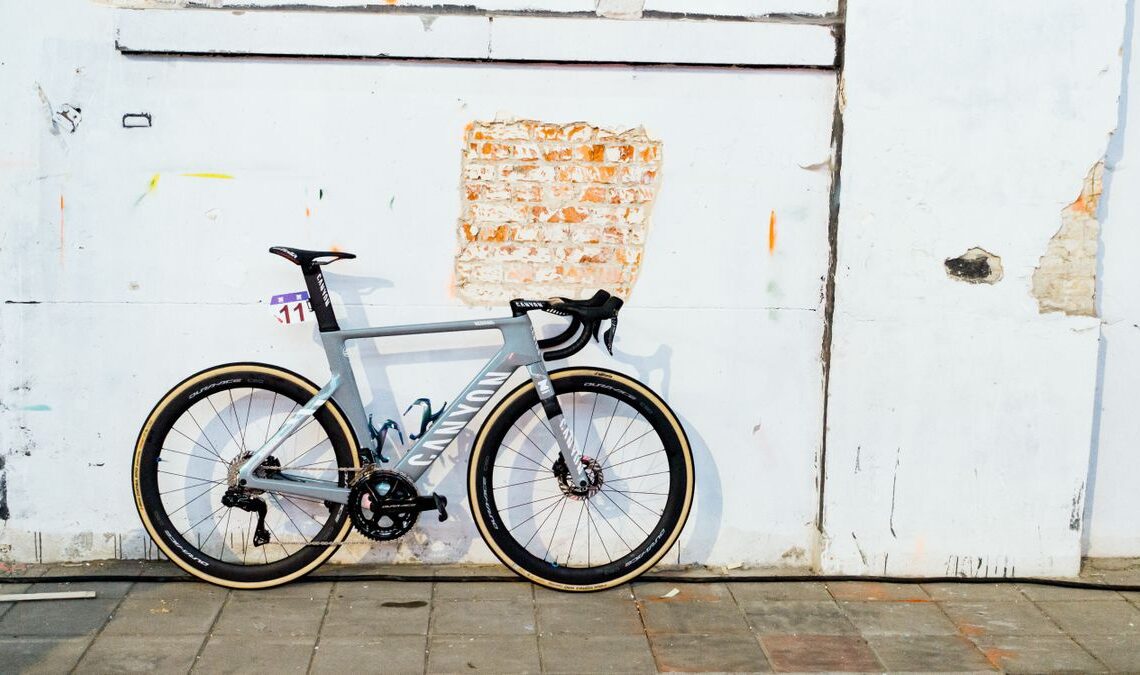Writing about tech at the classics fifteen years ago must have been an absolute doddle. Classics specific Dugast tyres abounded, and bikes were replete with all manner of cobbled mods. Box section rims in place of carbon, round bars and alloy stems, and the ever looming threat of a brand bringing out yet another road bike with a modicum of suspension.
Now it’s harder to find any standout tech strategies. Disc brakes and ever-widening tyre clearances have left modern bikes so alarmingly capable over rough ground that teams no longer really mod their setups at all for the classics. Sure, the odd rider here and there insists on using something wacky, but generally speaking riders use their standard setup for the Classics.
Take the winning bikes from Omloop Het Niewsblaad; two Cérvelo S5 bikes, with nothing at all out of the ordinary about their setup, save for an unreleased SRAM front derailleur and a new wheelset. Yes, I appreciate an unreleased derailleur and unseen wheels are noteworthy, but they are not components specific to the classics season, at least not from what we can tell at the moment anyway.
Regardless, taking a look at things in the round there are still trends worth talking about, and as ever it starts with tyres.
Wider tyres aren’t just for comfort
Casting my mind back to my visit to the Tour of Flanders last year, the talk of the tyre world was the unreleased, but widely spotted Vittoria Corsa Pro tyres. Most Vittoria sponsored teams ran them, and if my memory serves me correctly the majority of teams were using 28c widths.
Rumble on just shy of a year and you’d be forgiven for thinking 28c tyres had gone extinct. The majority of teams now, regardless of sponsorship, are using 30 tyres. As rims get wider so tyre width has to keep apace to maintain optimal aerodynamics. There is also the safety aspect, as there has been suggestions that a too-narrow tyre combined with a wide rim bed was to blame for Thomas de Gendt’s blowout during the UAE Tour.
Using 30c tyres would have been unheard of a few years back, but modern wheels are becoming increasingly optimised around this width, so it isn’t simply a comfort factor. Kuurne-Brussels-Kuurne is, on the whole for a Belgian classic, a very smooth race, and while there are cobbles it’s a far cry from those seen even at…
Click Here to Read the Full Original Article at CyclingNews RSS Feed…

